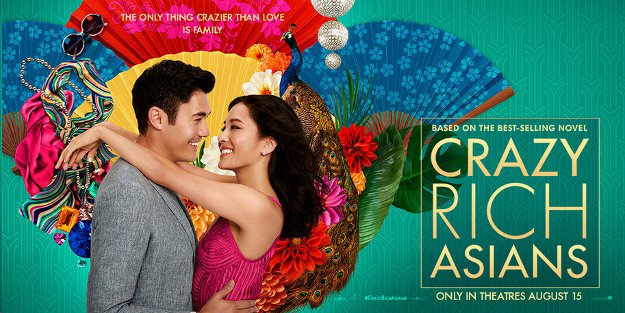‘Crazy Rich Asians’ Is an Important Cultural Breakthrough for Hollywood

This is an excerpt from an article originally published in Asian Journal. Read the rest here.
“Crazy Rich Asians,” which hit theaters nationwide on August 15, has already made history as the first major Hollywood film in 25 years to feature an all-Asian cast.
In this issue of MDWK Magazine, the Asian Journal explores what “Crazy Rich Asians” means for succeeding Asian representation in Hollywood and sits down with author Kevin Kwan, leading man Henry Golding and the Philippines’ “Queen of All Media” Kris Aquino (who plays Princess Intan) who all share their experiences working on the film.
Based off the best-selling book of the same name by Kwan (who served as an executive producer of the film), the romantic comedy follows American-born Chinese economics professor Rachel Chu (Constance Wu, “Fresh Off the Boat”) as she joins her boyfriend Nick Young (Golding) on a trip back to his hometown Singapore for his best friend’s wedding. Nick forgets to tell Rachel a minor detail, however, that his family is one of the wealthiest in the country. The trip opens Rachel’s up to a new world and she becomes the target of jealous socialites and Nick’s mother Eleanor (Michelle Yeoh, “Crouching Tiger, Hidden Dragon,” “Star Trek: Discovery”).
In addition to Wu, Golding and Yeoh, the Warner Bros. film — directed by Jon M. Chu— lines up an international cast, including Gemma Chan (“Humans”), Lisa Lu (“The Joy Luck Club”), Awkwafina (“Ocean’s 8”), Ken Jeong (“The Hangover”), Sonoya Mizuno (“La La Land”), Chris Pang (Crouching Tiger, Hidden Dragon: Sword of Destiny”), Jimmy O. Yang (“Silicon Valley”), Ronny Chieng (“The Daily Show”), Remy Hii (“Marco Polo”), and Filipino-American Nico Santos (“Superstore”).
Kwan and Chu — whose directorial credits include “Now You See Me 2,” “Step Up 2: The Streets” and “Justin Bieber: Never Say Never — in a recent interview with The Hollywood Reporter revealed that they turned down a big payday from Netflix, which included “artistic freedom, a greenlighted trilogy and huge, seven-figure-minimum paydays for each stakeholder, upfront.”
Instead, the duo opted for Warner Bros., as they believed that the story should be shown on a big screen first, instead of from the push of a button at home.

“We knew that putting it on the big screen still means something. Cinema still means something to tell people it is worth your time and energy to gather your friends or family or by yourself, leave your house, find parking, go pay for food…and say, ‘Tell me a story,’” Chu said during a filmmaker roundtable in Beverly Hills, California on Sunday, August 5. “It says this romantic couple and cast of all-Asian characters are worth your energy to do that and when you put something in a museum in the glass box, it still trickles down to everything else and says a lot.”
Kwan, who said that he hoped his book would be made into a film one day, said that the story has resonated across generations with family members passing down the book and bonding over the experience of reading it.
“I wanted this to be a community experience first of all, and also, this was the first chance we had in 25 years… I wanted this to be an experience that future generations could look at and say, ‘look, we achieved this.’ We’re watching a red carpet of amazing Asian actors walk up and down it, in the same way that any other Hollywood movie would get. We want that treatment too because ultimately we want to inspire,” he said on Sunday.
In the same Hollywood Reporter feature, the process of finding the right producers for the film was detailed, including a bit about how one producer had told Kwan to reimagine the lead female character as white.
Wu, who’s best known for her role in ABC’s “Fresh Off the Boat,” was the filmmakers’ first and only choice for the lead role as Rachel.
For Chu and Wu, the film was about exploring visiting Asia for the first time from the Asian American perspective and that identity.
This is an excerpt from an article originally published in Asian Journal. Read the rest here.





























































































































































































































































































































